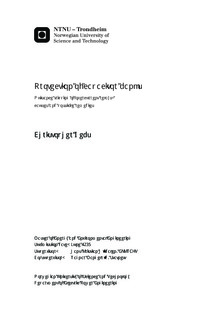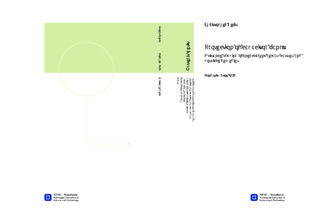| dc.contributor.advisor | Høidalen, Hans Kristian | nb_NO |
| dc.contributor.advisor | Mangelrød, Ragnar | nb_NO |
| dc.contributor.author | Gebs, Christopher | nb_NO |
| dc.date.accessioned | 2014-12-19T13:54:24Z | |
| dc.date.available | 2014-12-19T13:54:24Z | |
| dc.date.created | 2013-09-21 | nb_NO |
| dc.date.issued | 2013 | nb_NO |
| dc.identifier | 650454 | nb_NO |
| dc.identifier | ntnudaim:9744 | nb_NO |
| dc.identifier.uri | http://hdl.handle.net/11250/257612 | |
| dc.description.abstract | The origin of this master thesis is Statnett having problems with nuisance tripping of capacitor banks. Their own measurements are said to indicate that harmonics are confusing the overcurrent relays. Disconnecting a large capacitor bank from the transmission system can have large consequences for the stability of the system. Consequently any nuisance tripping such as Statnett has experienced should not be allowed to happen again. Measures must be taken to increase the security of the protection system. The aim of this thesis is to investigate the overloading of capacitor banks and operation of numerical relays in harmonic rich environments. Investigate why Statnett have experienced nuisance tripping of overcurrent relays, and introduce possible mitigation measures. The definition of nuisance tripping has been broadened to also include correct tripping because of unwanted resonance. Initially a literature study was conducted to acquire information on the prevailing limits that dictate threshold in relays. Limits have been found in IEC60871-1, and IEEE Std 1036-2010, and IEEE Std. C37.99-2000. In addition a number of books, standards and other publications have been used to understand how capacitors, relays and the general protection systems are influenced by harmonics and possible remedies when overloading becomes an issue. Together with the limits found in standards and regulations measurements from PQSCADA was used as an overview of what can be considered normal operation.A model was created in ATPDraw based on the datasheet and a relay plan of a 420kV capacitor bank. The system is constructed for this simulation and does not represent one particular real life system. Further on it was used to test the difference between an unfiltered, single-tuned, and a c-type filtered capacitor bank. Simulations with both injection of harmonic current from the inductive load and simulations with a voltage source at the grid side dimensioned according to the regulation limits were conducted. It was shown that a system with multiple capacitive and inductive components will have multiple resonance frequencies. As the short-circuit power varies these will fluctuate and might occur at a characteristic harmonic. The consequent amplification of the current will in many instances be large enough to overload the capacitor bank. A single-tuned filter solution will lower the resonance frequency but it is dependent on the short-circuit impedance and will thus vary. Using a c-type filter is more complex than a single-tuned but it results in a filter that is independent of the short-circuit impedance. The amplification of currents at the resonance frequency is also smaller with the c-type filter.Aliasing of high harmonics can possibly cause nuisance tripping of the over current protection if they are not filtered out. It is therefore important to know what harmonics will be present and specify a relay that can handle such harmonics. Although applying a filter is normally intended to avoid actual overloading it can also be applied to lower the loading and making it easier for the relay to separate the particular situations where faults have occurred. | nb_NO |
| dc.language | eng | nb_NO |
| dc.publisher | Institutt for elkraftteknikk | nb_NO |
| dc.title | Protection of capacitor banks: Nuisance tripping of overcurrent relays; causes and possible remedies | nb_NO |
| dc.type | Master thesis | nb_NO |
| dc.source.pagenumber | 76 | nb_NO |
| dc.contributor.department | Norges teknisk-naturvitenskapelige universitet, Fakultet for informasjonsteknologi, matematikk og elektroteknikk, Institutt for elkraftteknikk | nb_NO |

